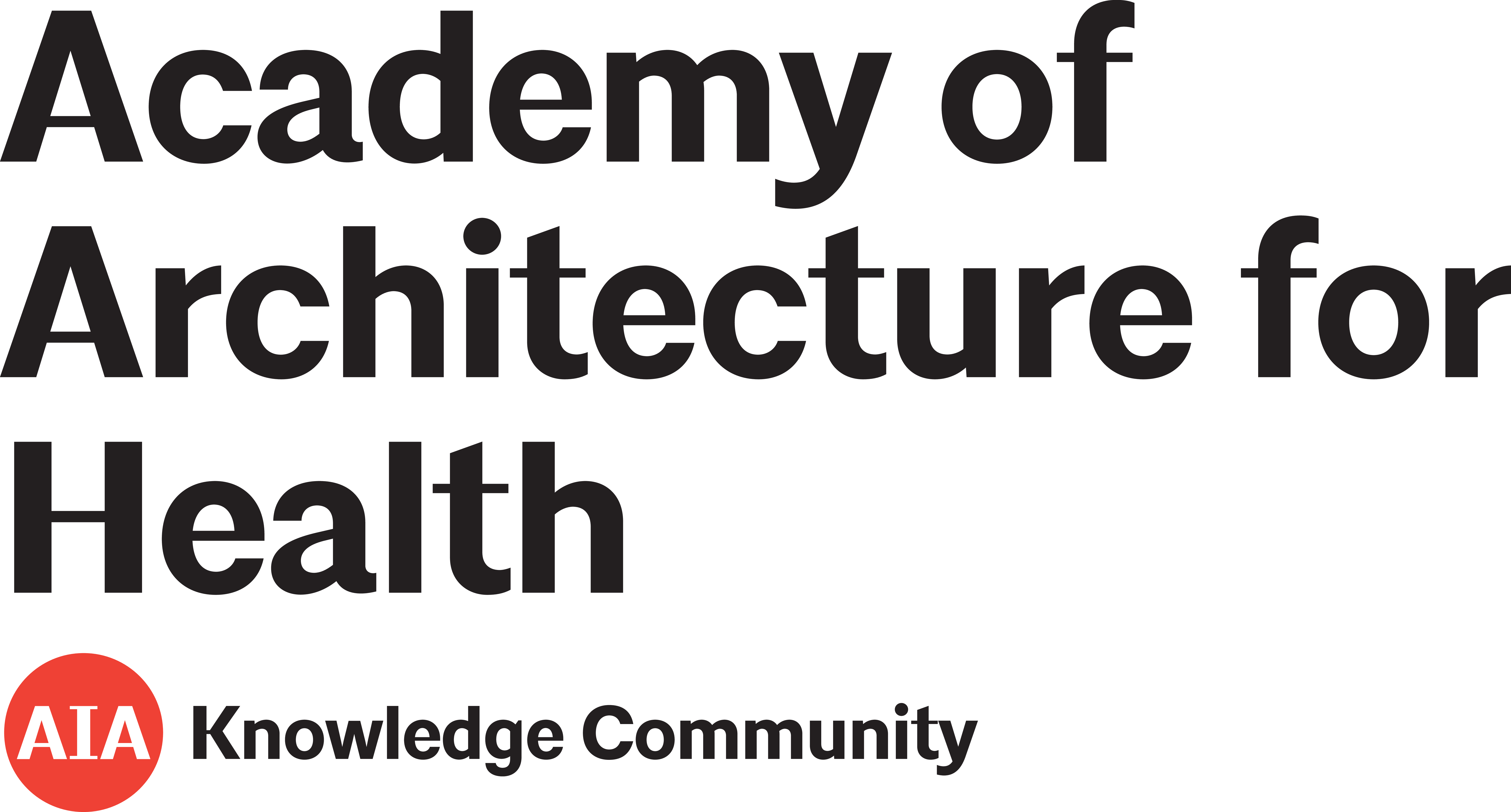Neonatal intensive care nursery staff perceive enhanced workplace quality with the single-family room design
2010
Journal of Perinatology
Journal Article
Issue 5
Volume 30
Pages 352–358
Author(s): Stevens, D. C., Helseth, C. C., Khan, M. A., Munson, D. P., Smith, T. J.
Added December 2016
The impact of architectural design upon the environmental sound and light exposure of neonates who require intensive care: An evaluation of the Boekelheide Neonatal Intensive Care Nursery
2007
Journal of Perinatology
Journal Article
Author(s): Stevens, D. C., Khan, M. A., Munson, D. P., Reid, E. J., Helseth, C. C., Buggy, J.
Added December 2016
Single-Family Room Design in the Neonatal Intensive Care Unit—Challenges and Opportunities
2010
Newborn and Infant Nursing Reviews
Journal Article
Issue 2
Volume 10
Pages 83-86
Author(s): White, R. D.
Added December 2016
Design, Implementation, and Early Outcome Indicators of a New Family-Integrated Neonatal Unit
2016
Nursing for Women's Health
Journal Article
Issue 2
Volume 20
Pages 158-166
Author(s): Mann, D.
Added December 2016
The Single-Family Room Neonatal Intensive Care Environment
2016
NeoReviews
Journal Article
Issue 12
Volume 17
Pages e687-e696
Author(s): Stevens, D. C., Munson, D. P., Khan, M. A.
Added December 2016
Secondary exposure risks to patients in an airborne isolation room: Implications for anteroom design
2016
Building and Environment
Journal Article
Author(s): Mousavi, E. S., Grosskopf, K. R.
Previous research has shown that negatively pressurized Airborne Infectious Isolation Rooms (AIIRs) can protect hospitals from fatal airborne pathogens such as tuberculosis. But this use of negative pressurization can simultaneously increase the chances of isolated patients contracting secondary infections, or healthcare-acquired infections (HAIs), caused by air blowing in from adjacent spaces. Research is needed to better assess the actual likelihood of secondary infections occurring in these scenarios so that steps can be taken to mitigate these risks.
Added December 2016
Nature! Small Steps that can Make a Big Difference
2016
HERD: Health Environments Research & Design Journal
Journal Article
Issue 2
Volume 9
Pages 6-10
Author(s): Sullivan, W. C., Kaplan, R.
Added December 2016
Energy Efficient Lighting System Design for Hospitals Diagnostic and Treatment Room—A Case Study
2012
Journal of Light & Visual Environment
Journal Article
Issue 1
Volume 36
Pages 23-31
Author(s): Alzubaidi, S., Soori, Prashant Kumar
Added December 2016
Hospital-acquired infection in public hospital buildings in the Philippines: Is the type of ventilation increasing the risk?
2016
The Journal of Infection in Developing Countries
Journal Article
Issue 11
Volume 10
Pages 1236-1242
Author(s): Vergeire-Dalmacion, G. R., Itable, J. R., Baja, E. S.
Added December 2016
Older Adults’ Outdoor Walking: Inequalities in Neighbourhood Safety, Pedestrian Infrastructure and Aesthetics
2016
International Journal of Environmental Research and Public Health
Journal Article
Issue 12
Volume 13
Pages 1-24
Author(s): Zandieh, R., Martinez, J., Flacke, J., Jones, P., van Maarseveen, M.
Added December 2016
Residential hospice environments: evidence-based architectural and landscape design considerations
2014
Journal of Palliative Care
Journal Article
Issue 2
Volume 30
Pages 69-82
Author(s): Verderber, S.
Added November 2016
Eight Years of Data on Residents in Small Dementia-Care Settings Suggest Functional Performance Is Maintained
2015
Journal of Housing For the Elderly
Journal Article
Issue 3
Volume 29
Pages 298-328
Author(s): Milke, D. L., Leask, J., George, C., Ziolkowski, S.
The authors of this study note the impact of a home-like environment on the cognitive decline of dementia patients.
Added November 2016
Low stimulus environments: reducing noise levels in continuing care
2016
BMJ Quality Improvement Reports
Journal Article
Issue 1
Volume 5
Pages 1-4
Author(s): Brown, J., Fawzi, W., Shah, A., Joyce, M., Holt, G., McCarthy, C., Stevenson, C., Marange, R., Shakes, J., Solomon-Ayeh, K.
This article highlights a project that aimed to reduce levels of intrinsic background noise on an adult mental health ward. Following intervention, the ward was able to decrease the background noise decibel level from 60dB to 53dB (on average).
Added November 2016
Individualizing hospital care for children and young people with learning disabilities: it's the little things that make the difference
2015
Journal of Pediatric Nursing
Journal Article
Issue 1
Volume 30
Pages 78-86
Author(s): Oulton, K., Sell, D., Kerry, S., Gibson, F.
People with learning disabilities (LDs) represent one of the largest groups with a lifelong disability, reaching nearly 60 million people worldwide. In England alone, it is estimated that 1.5 million people live with an LD, 286,000 of them being children and young people ages 0-17. It has been found that those with LD have more hospital admissions and greater hospital stays than those children without.
Added November 2016
Methodological challenges in studies of bright light therapy to treat sleep disorders in nursing home residents with dementia
2014
Psychiatry and Clinical Neurosciences
Journal Article
Issue 11
Volume 68
Pages 777-784
Author(s): van der Ploeg, E. S., O'Connor, D. W.
Research studies conducted in the past 20 years have failed to validate the effectiveness of bright white light treatment of sleep disorders in nursing home or long-stay hospital residents with dementia. This trend is documented in a Cochrane Collaboration meta-analysis of 10 selected studies where problems in the research methodologies were identified. The prevalence of sleep disorders among residents diagnosed with dementia varies from 40% to 70%.
Added November 2016
Light at Night and Measures of Alertness and Performance: Implications for Shift Workers
2016
Biological Research For Nursing
Journal Article
Issue 1
Volume 18
Pages 90-100
Author(s): Figueiro, M. G., Sahin, L., Wood, B., Plitnick, B.
Rotating-shift workers, particularly those working at night, are likely to experience sleepiness, decreased productivity, and impaired safety while on the job. Light at night has been shown to have acute alerting effects, reduce sleepiness, and improve performance. However, light at night can also suppress melatonin and induce circadian disruption, both of which have been linked to increased health risks. Previous studies have shown that long-wavelength (red) light exposure increases objective and subjective measures of alertness at night, without suppressing nocturnal melatonin.
Added November 2016
Analysis of circadian stimulus allowed by daylighting in hospital rooms
2017
Lighting Research and Technology
Journal Article
Issue 1
Volume 49
Pages 49-61
Author(s): Acosta, I, Leslie, R. P., Figueiro, M. G.
Light is the major synchronizer of circadian rhythms to the 24-hour solar day. Compared to the visual system, the circadian system requires more light to be activated and is more sensitive to short-wavelength light. For those confined indoors, such as patients or residents in care facilities, the lack of access to daylight, or electric lighting providing a comparable amount, spectrum, distribution, duration, and timing, may compromise their human health and well-being.
Added November 2016
Systematic light exposure in the treatment of cancer-related fatigue: a preliminary study: Systematic light exposure in the treatment of cancer-related fatigue
2014
Psycho-Oncology
Journal Article
Issue 12
Volume 23
Pages 1431-1434
Author(s): Redd, W. H., Valdimarsdottir, H., Wu, L. M., Winkel, G., Byrne, E. E., Beltre, M. A., Liebman, E. S., Erazo, T., Hayes, J. A., Isola, L., Scigliano, E., Meschian, Y., Lutgendorf, S., Ancoli-Israel, S.
Patients with cancer frequently report the side effect of fatigue, which is described as distressing, persistent, and related to physical, emotional, and cognitive tiredness or exhaustion. Patients report feeling tired after resting during their treatments and long after the treatment has ended.
Added November 2016
Shift work: health, performance and safety problems, traditional countermeasures, and innovative management strategies to reduce circadian misalignment
2012
Nature and Science of Sleep
Journal Article
Author(s): Eastman, C. I., Smith, M. R.
This paper is a review of the literature related to health, performance, and safety problems associated with night shift work. The review of articles and research papers focused on circadian misalignment between the individual’s internal circadian clock and activities such as work, sleep, and eating. There is also discussion about chronic partial sleep deprivation and melatonin suppression at night. The articles reviewed include theory papers and research papers.
Added November 2016
Intuitive Hypothesis and the Excitement of Discovery
2014
HERD: Health Environments Research & Design Journal
Journal Article
Issue 2
Volume 7
Pages 140–143
Author(s): Hamilton, D. Kirk
Added November 2016




